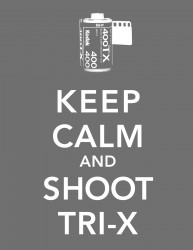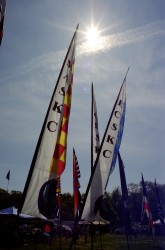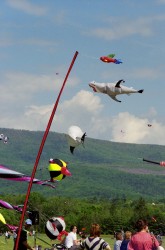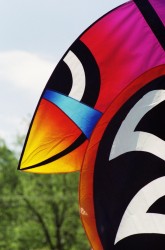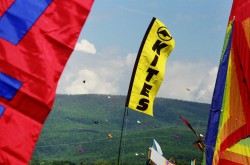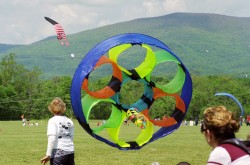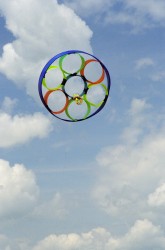So, yesterday, Flickr changed…well, basically…everything. Layout, pricing structure, the whole ball of wax. I’ve had a chance to sleep on it and think a bit about it now, rather than just reacting with predictable geek rage like the 100+ (and growing!) pages of angry comments on the Flickr help forum.
First thoughts? I don’t dislike the new layout. OK, I really don’t like the default “contacts photos all huge and in your face yo” view. I like my contacts, but this is not how I want to view their work. Seriously. Still I can always change my bookmark to take me where I want to start. On the other hand, the uncropped thumbnails “flow” layout used elsewhere works nicely though it could sure use some more space between thumbnails, and the single photo view does showcase the image nicely. It’s all rather resource intensive though.
Everything else about the design is just moved cheese. I’ll deal with it.
Most of the Internet Rage has focused on the design issues, but I think they’re all missing the real problem.
The real problem is that Flickr seems determined to become the place for snapshots, to outdo Facebook and Instagram. Their 1 terabyte of space for everyone is an open invite to dump everything they ever shoot up there, a cloud-based storage and backup solution for photos.
My problem with that is I’m not there for snapshots. I’m not there to wade through your backup copy of Every Photo Ever. I don’t want the equivalent of Mad Uncle Ernie’s Endless Vacation Slideshow of Doom just to get to the one or two decent photos out of the lot. Not every photo which plops out of your camera is worth sharing; I’m happy if I get more than a couple of good shots for every dozen I expose, but then I edit out all the crap and variants on the same subject because as the photographer, that’s my job, not the viewer’s job. You really don’t need (or want) to see my off-cuts and I really don’t need them diluting the impact of the stuff I do deem worthy of sharing.
I’m there because I enjoy good photography and take it somewhat seriously. I’m there because it offered a good place to show the best of my work. I’m already struggling with the uneasy feeling that I’m pouring chocolate syrup into the middle of the ocean and hoping someone at some beach somewhere notices it; that feeling just got 100 times worse now that there’s nothing left to stop people just uploading everything without bothering to edit at all.
Then, there’s the very clear push toward free, ad-supported service. No new pro accounts (but you can pay $50 a year just to remove the ads from your own viewing experience? No, I’ll find some other way, like AdBlock Plus, and put that half-a-C-note toward something useful). Existing pro accounts are grandfathered in but have lower limits on maximum individual file sizes than the freebies now do, and really only differ from the free accounts in that they have unlimited storage (like 1TB isn’t enough? How many photos do you need to share online anyway? Every photo I’ve ever shot wouldn’t begin to fill that space!)
Free accounts appear to have the same limits on groups and sets now as the old pro ones did. There’s really no good reason left to be a paid subscriber and given their current offer of a prorated refund for people who revert from pro to free, it’s clear they’d rather you see the ads they want to push into the experience.
I have significant misgivings about that since I want my photographic work to be taken seriously. Sticking random advertising alongside it and making it essentially pointless for anyone to opt out of the ads feels cheapening, really, like they only want my (freely donated) photography as a vehicle to market other stuff to viewers. I much prefer the arrangements over at 500px, where the free account is limited (not to the point of being useless and crippled, but enough so that the reasonably priced paid options are worth paying for) and nobody sees advertisements.
Of course right now, 500px is likely to be one destination for the enraged and disenchanted of Flickr. Already this morning, I had to wade through nearly 200 pages of utterly mediocre photography in the “fresh” section because one idiot had decided to upload some 2,500 photos without bothering to edit down to the good stuff (if there was any; I couldn’t find his “good stuff” among it all). One of the defining things about 500px is it really hasn’t been a dumping ground for just any old stuff. People, mostly, do seem to abide by the recommendation that you only upload your best work. I hope that doesn’t change too much because of a sudden stream of Flickr refugees looking for somewhere to dump years’ worth of photostream content without taking the opportunity to cherry pick their best quality work first.
I’m not planning to abandon ship and move everything elsewhere, yet. But I’m going to have to see how things pan out and how obnoxious the planned advertising will be.
